Lecce is a small city that allows you to see all its beauty on a weekend trip with friends or a romantic trip with your other half. Check out what monuments are waiting for you to discover in the capital of Salento.
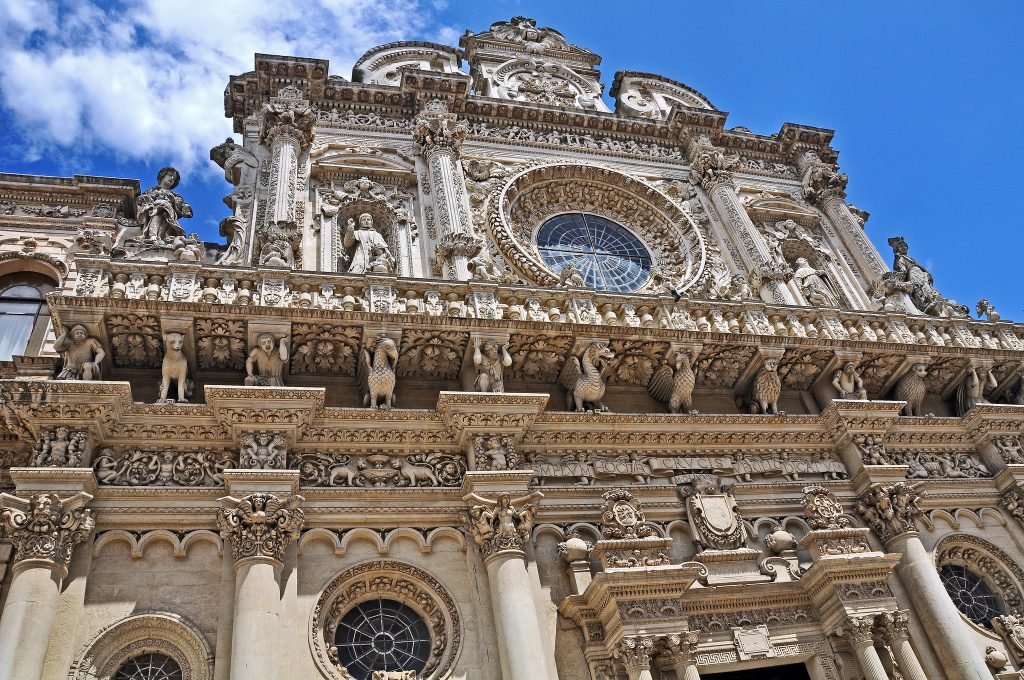

Beautiful architecture, shaped largely by the activities of the orders – Jesuits, Theatines and Franciscans – is not limited to temples. Beautiful facades carved in soft stone decorate not only churches, but also palaces, offices and historic villas of former nobles. The well-preserved Roman amphitheater is also worth seeing.
Lecce is a city and comune in the province of Lecce, in the Apulia region of Italy.
Colleges and universities: University of Salento, EUROBUIS European Business and Innovation School
SIGHTSEEING:
Piazza Sant’Oronzo
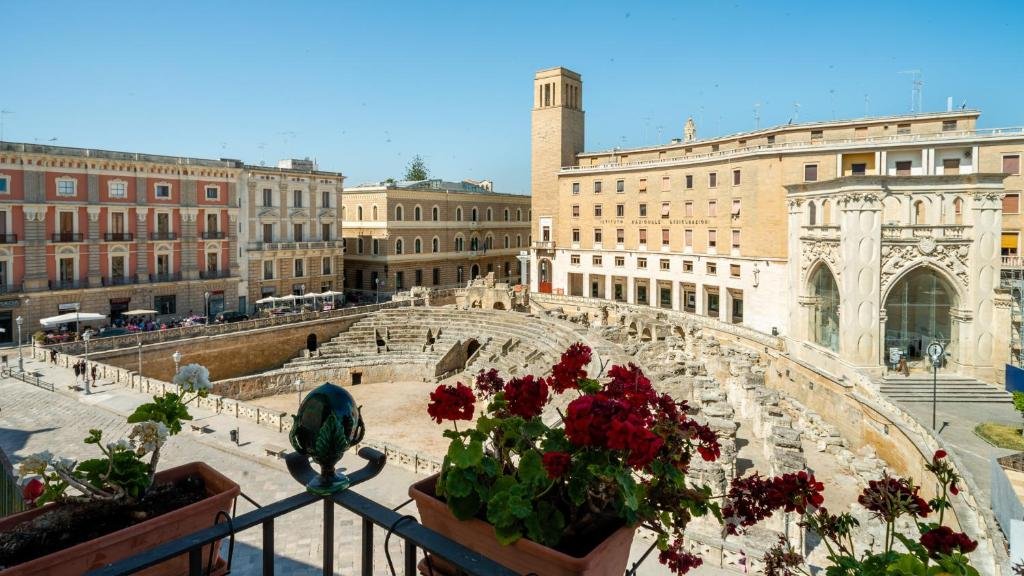
Piazza Sant’Oronzo: Piazza dei Mercadanti, as it was called before it was dedicated to the patron saint, is the heart of the city’s life, containing historical and architectural heritage from very different eras. The square is the pride and privilege of life for the inhabitants of Lecce.
Piazza Sant’Oronzo is a true symbol of the city’s thousand-year history. You can see a variety of architectural styles associated with different eras. Closed to traffic, it is not only a meeting place for Lecce’s inhabitants, but also the scene of events taking place throughout the year. marked by the distinctive Roman amphitheater, brought to light in the mid-20th century. Until then, shops stood in this place on the edge of the historic center. So it was the commercial center and the beating heart of the city and for this reason it was called “Merchants’ Square”.
- Chiesetta di San Marco
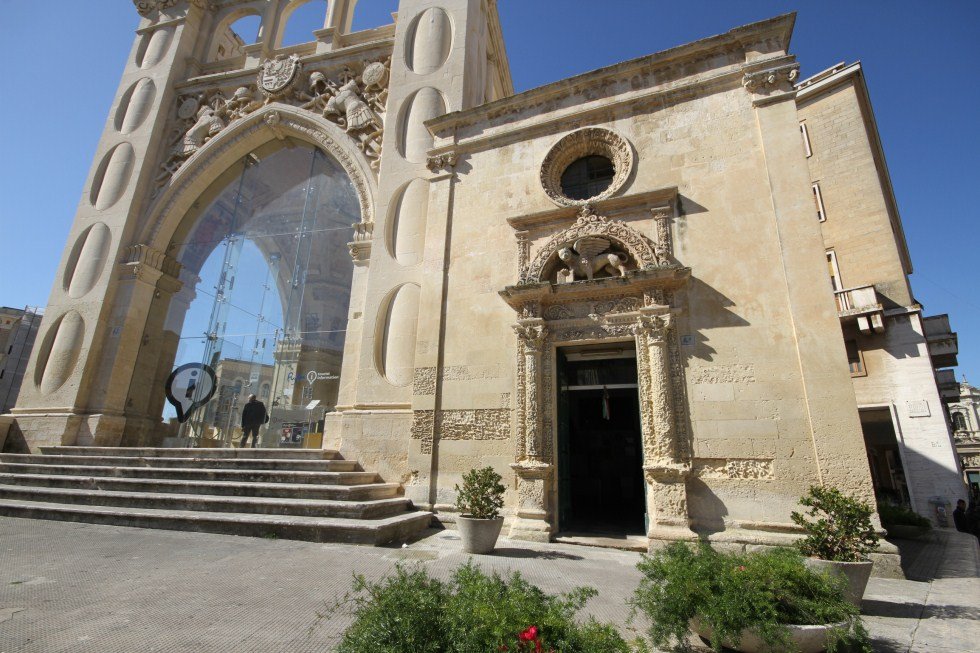
This small temple, from the first half of the 16th century, was created by the colony of Venetian citizens, resident in the city since 1300. The building was born from the modification of the structure of the ancient Chapel of San Giacomo, located in the central area of the ancient Piazza dei Mercanti which today is the main square of the city of Lecce, dedicated to Sant’Oronzo since 1656.
- La Chiesa di Santa Maria delle Grazie
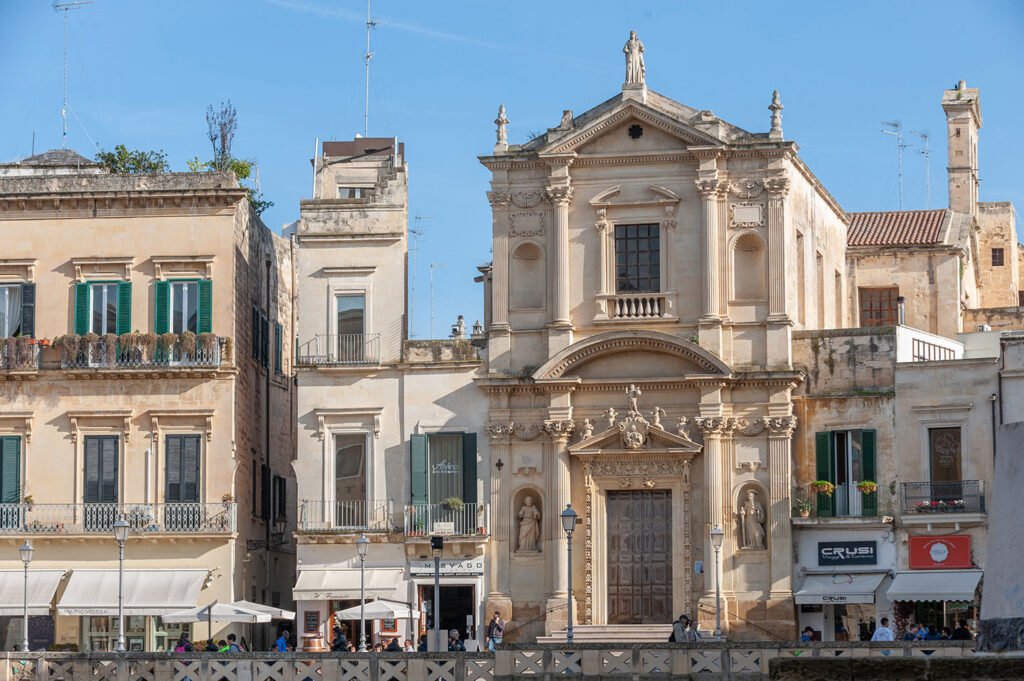
The Church of Santa Maria della Grazia is a religious building in Lecce built during the Baroque period. It stands on the central square of Piazza Sant’Oronzo, opposite the Roman amphitheater. The church was built after the discovery of a fresco of the Madonna from the 14th century. It was built in the last decades of the 16th century. It was a parish from 1606 to 1958. The façade is elegant and divided by an entablature, dominated by a gable arch, in two rows. In turn, the orders are divided into three zones by columns and Corinthian pilasters.
- Palazzo Carafa
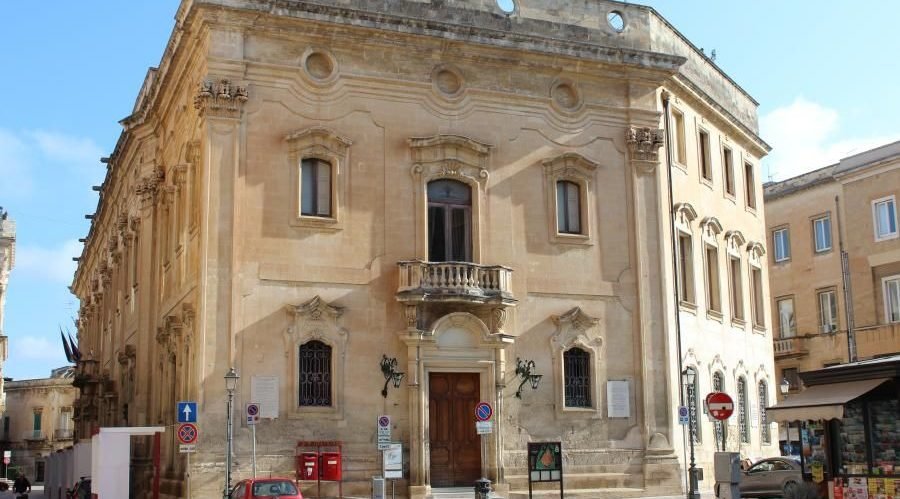
Bishop Alfonso Sozy Carafa sponsored the reconstruction of the ancient Paolotte monastery in 1764, giving life to this complex and refined building, with windows softened by curved frames in Rococo style, which became the seat of the Municipality after the Unification of Italy. On the façade, crossed by an order of pilasters in an alternating rhythm of bays with one and two windows, the coat of arms of the Carafa family appears, while on the elegant doors of the portal are arranged the heraldic symbols of the Norman counts who dominated the city between the 11th and 12th centuries .
- Roman Amphitheater
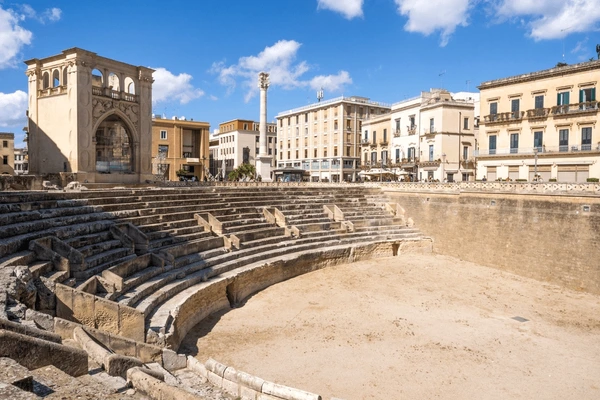
The Roman amphitheater in Piazza Sant’Oronzo dates from the historical period between the era of Augustus and the era of Trajan-Hadrian. The commencement of archaeological excavations, thanks to which the monument was brought to light, led to a noticeable change in the square and, consequently, to the disappearance of the previously existing shops. The amphitheater was discovered in the early 20th century during construction works on the Banca d’Italia building. Excavations that lasted until 900. The monument, which stands in front of the Baroque church of Santa Maria della Grazia, is managed by the Ministry of Cultural Heritage and Activities through the Regional Directorate of Museums. Today it hosts events and outdoor shows. However, part of the structure still remains hidden underground in the square.
Piazza Duomo
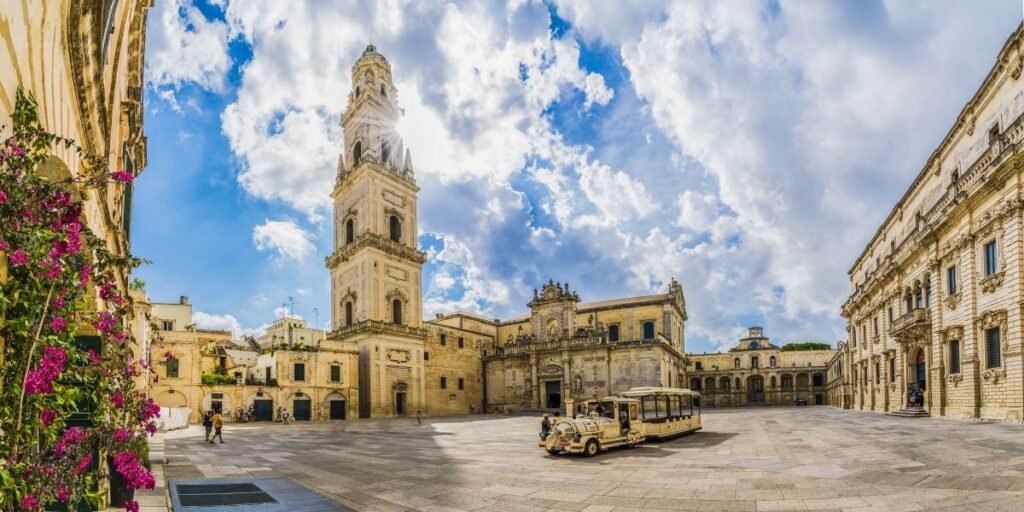
The Duomo Palace is also located in the historic center of Lecce, where at the end of via Palmieri opens the refined baroque setting of Piazza Duomo, announced at the entrance of the Propylaea with statues of the Fathers of the Church above them who seem to do honors for guests entering the holy square of the city of Lecce. There are 4 fascinating buildings here: the Bell Tower, the Cathedral, the Episcopal Church and the Diocesan Museum.
- Il Duomo di Lecce

The Cathedral of Maria Santissima Assunta is the baroque heart of the city and stands where the main arteries of the historic center intersect. The magnificent bell tower is one of the tallest in Europe and on its top hangs a weather vane depicting the patron saint of Lecce, Sant’Oronzo.
The Cathedral WAS CONSACATED IN 1144 BUT WAS ALMOST COMPLETELY REBUILT IN 1689, shortly after the bell tower was built.
- Il Campanile del Duomo
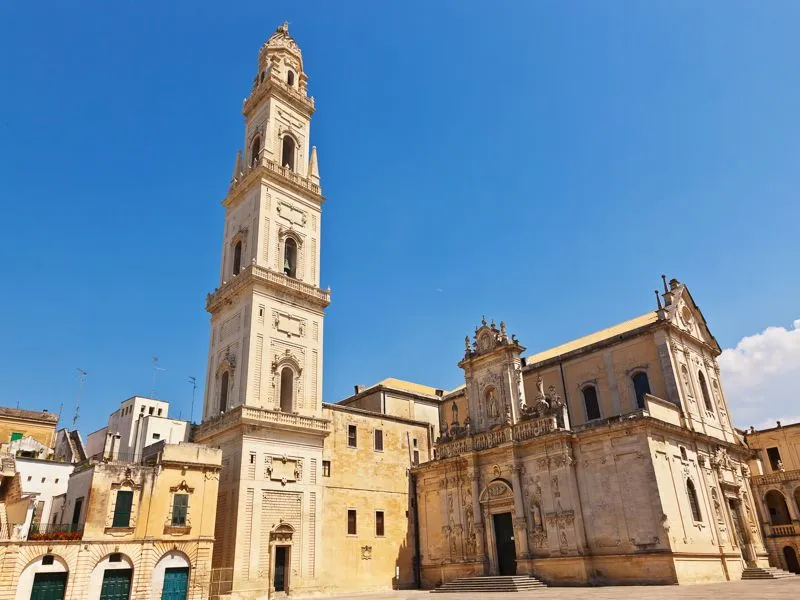
The architectural complex of Piazza Duomo ends in the imposing Bell Tower, one of the tallest in Europe. 68 meters high, it stands out lightly in the sky of Lecce, dominating the entire historic center with its slender plastic strength. The Bell Tower has a square-based plan that rises to a total of five floors decreasing upwards, each of which underlined by a richly decorated balustrade.
- Episcopio

Next to the Cathedral stands the Bishop’s residence, renovated in 1758 based on a design by Emanuele Manieri who gave it an elegant and classical feel. Above the entrance arch is the coat of arms of Bishop Sozi Carafa and the client. On the second order, the three niches house as many stone statues of which the one in the center is dedicated to the Madonna. While on the pediment, in the center of the facade, there is a clock once placed at the entrance to the square.
- Museo Diocesano
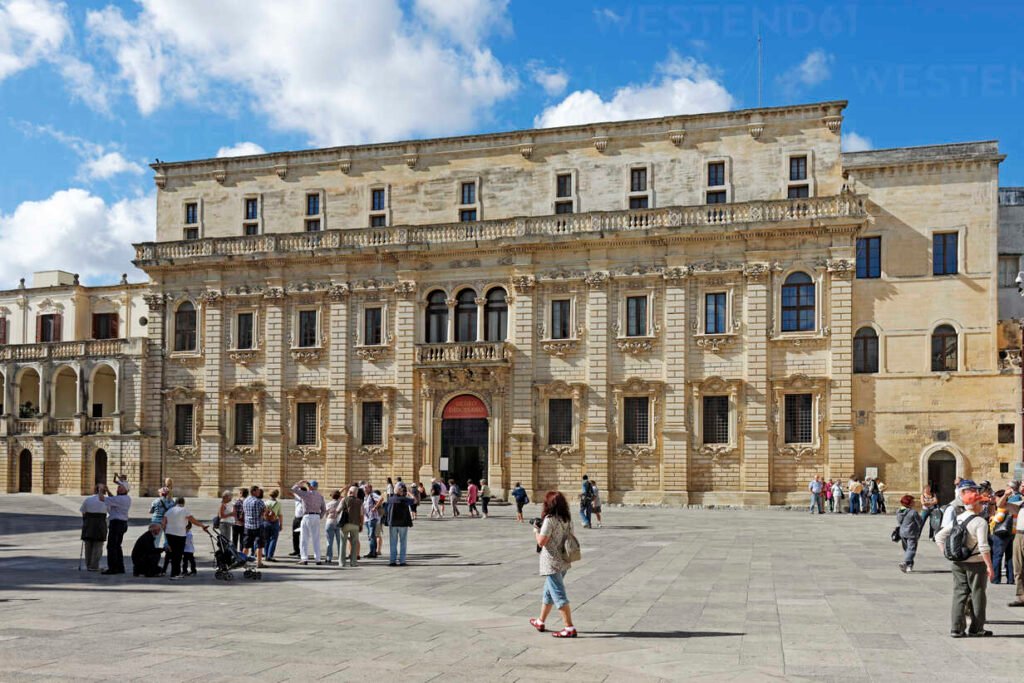
This Diocesan Museum of Sacred Art is located together with the Diocesan Archives and the Innocent Library in the magnificent building of the Theological Seminary. Construction began in 1694, inaugurated in 1709, and then expanded in 1729 by Pignatelli. It contains paintings, sculptures, plates and liturgical vestments that document the broad artistic heritage of the Diocese, with particular emphasis on the city of Lecce.
What else is worth seeing
Basilica Santa Croce
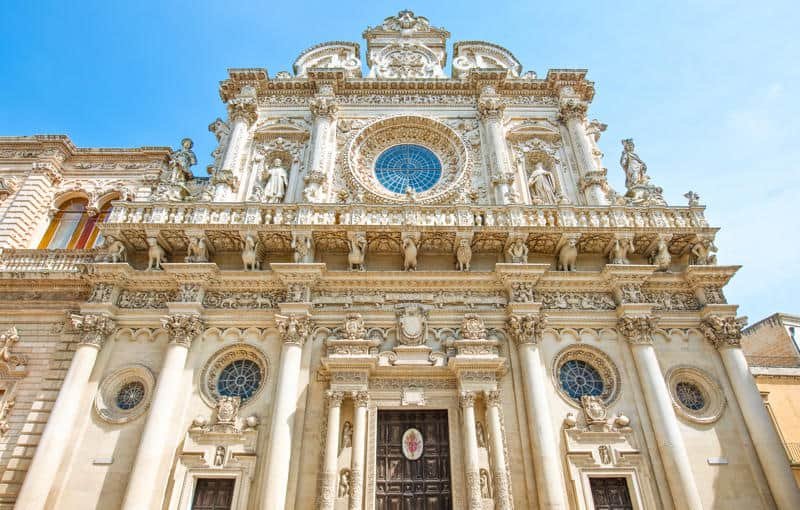
The Basilica of Santa Croce is a church in the historic center of Lecce, in via Umberto I. Together with the adjacent former Celestine convent it constitutes the highest manifestation of the Baroque style and more particularly of the Lecce Baroque. It has the dignity of a minor basilica. In the area of the current basilica, Walter VI of Brienne had already founded a monastery in the 14th century, but it was only after the mid-16th century that it was decided to transform the area into a monumental area. To find the land, houses and properties of the Jews, expelled from the city in 1510, were requisitioned. The works for the construction of the basilica lasted for two centuries, between the 16th and 17th centuries, and involved the most important city architects of the time .
Porta Napoli

Porta Napoli is the triumphal arch of Lecce that marks the entrance to the historic center of the city along with the other two existing ports, Porta San Biagio and Porta Rudiae. It is located near Arco di Trionfo square. Porta Napoli was built in honor of Emperor Charles V who had the fortress built to defend the city, on the site of the previous Porta San Giusto.
Porta Rudiae
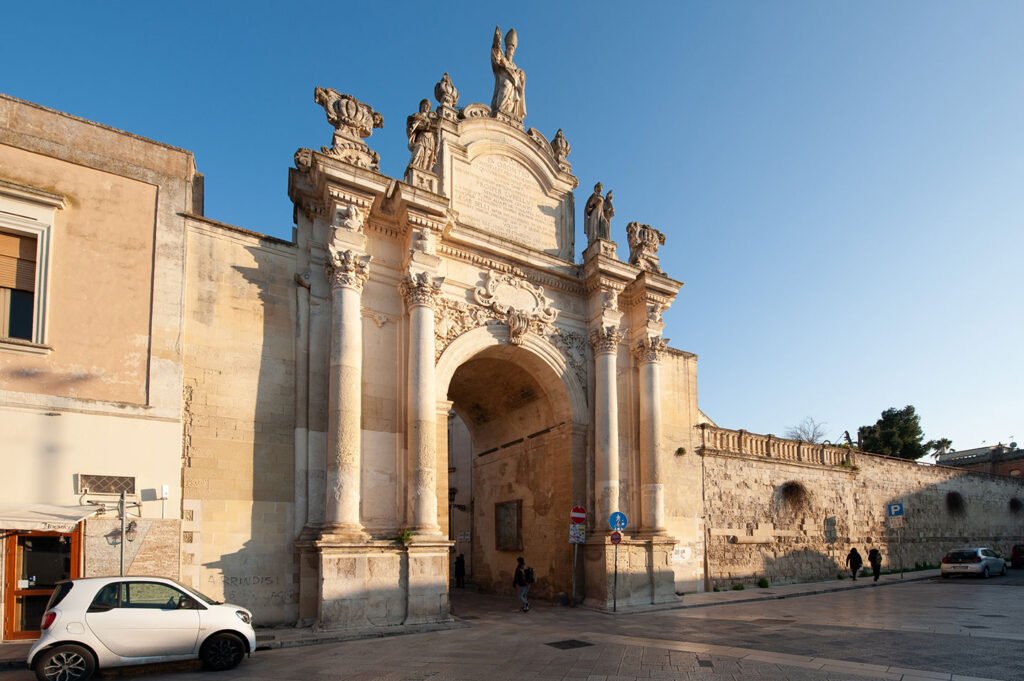
Open on the arm of the eastern city walls, Porta Rudiae is the most interesting and oldest gate of Lecce, which turned towards the ancient destroyed city of Rudiae, from which it took its name. It is located on Via Adua, near the intersection of University Avenue and Via Dalmazio Birago. Built on the ruins of an older door that collapsed in the late 17th century, Porta Rudiae was rebuilt in 1703.
Porta Saint Blaise

Porta San Biagio is dedicated to Saint. Biagio, once the city of Sebaste in Arména in the 4th century. It is the southern access to the former urban center. It is located near Piazza d’Italia. Porta San Biagio was rebuilt in 1774 by order of the governor of Terra d’Otranto, Tommaso Ruffo, as evidenced by the Latin motto placed there.
Castello Carlo V
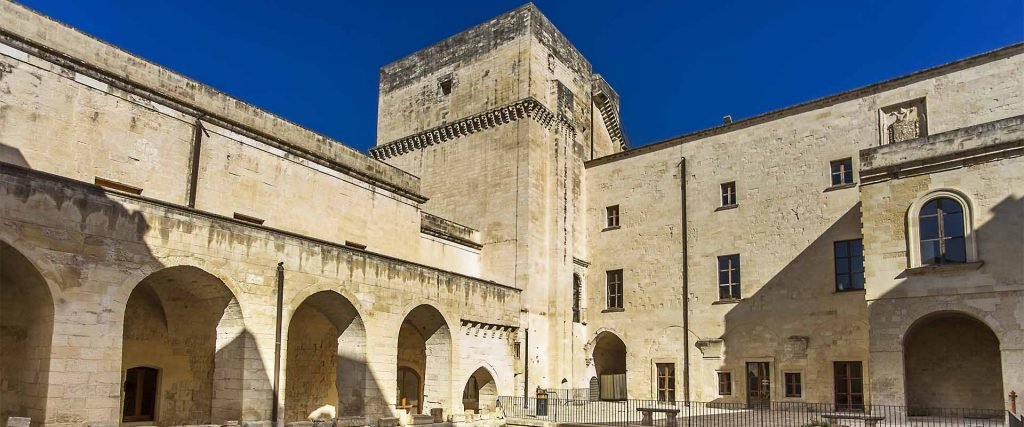
Built in the 12th century. AD, as attested by the excavations in the courtyard, the castle of Lecce is known to tourists who visit the city – and to the people of Lecce themselves – with the name of Castle of Charles V since its definitive and current configuration is the result of the sixteenth-century renovation ordered by Spanish ruler.
